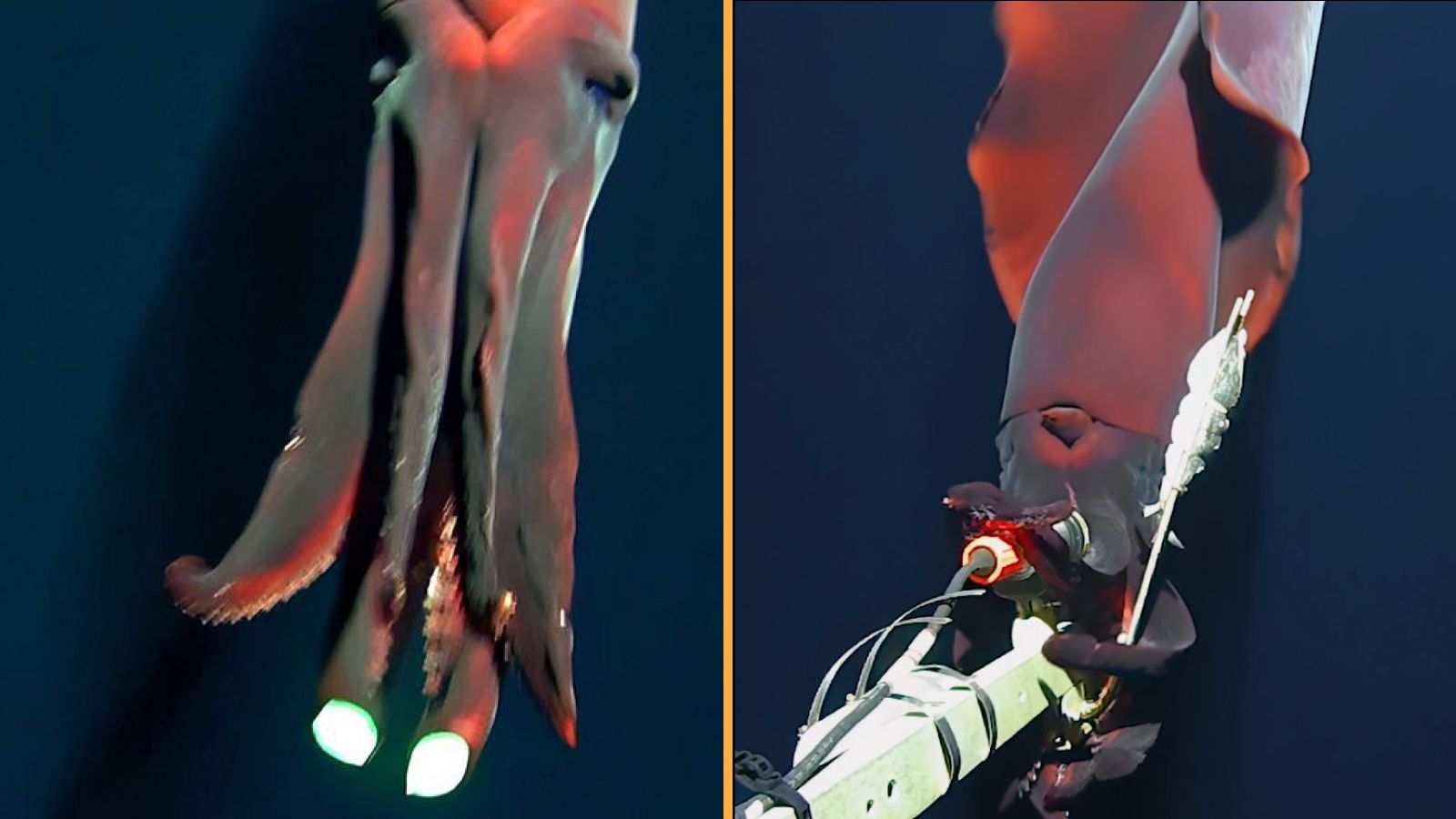Follow us on Google News (click on ☆)

Squids use their large photophores to stun and disorient their prey.
Credit: UWA/Inkfish
Researchers from the Minderoo Foundation and the University of Western Australia (UWA) captured this scene at around 3,280 feet (1,000 meters) below the surface in the Pacific Ocean, near the Samoa Passage. This team, actively exploring the hadal zone, observed this remarkable squid.
The creature in question is a Taningia dana squid (Taningia danae), belonging to the family Octopoteuthidae. These squids feed on pelagic fish, crustaceans, and other squids. As juveniles, they have two long tentacles that disappear by adulthood.
Specimens of this species can reach impressive sizes, with a record of 7.5 feet (2.3 meters) for a female. The one filmed measures approximately 30 inches (75 centimeters). In the video, the squid suddenly emerges from the darkness, envelops the camera with its arms, and quickly escapes after displaying its bright photophores located at the ends of two of its arms.
The photophores of T. danae emit bursts of light thanks to a chemical reaction. They are the largest photophores in the animal kingdom. However, scientists had rarely observed these lights in action until this encounter.
Heather Stewart, a marine geologist affiliated with UWA, expressed their luck in capturing this rare moment. Researchers believe that the photophores help these squids to stun their prey and possibly communicate among themselves, modulating the bursts of light with eyelid-like membranes.
These observations are invaluable as the behaviors of T. danae remain largely unknown. Most information comes from stranded specimens, those caught accidentally, or found in the stomachs of whales. The first living recording dates back to about 19 years ago.
According to Alan Jamieson, director of the UWA deep-sea research center, each encounter is essential for understanding the geographical distribution, depth, and behavior of these astonishing animals.
Bioluminescence: a unique ability
Bioluminescence is the production and emission of light by a living organism. This phenomenon is the result of a chemical reaction in which an enzyme called luciferase catalyzes the oxidation of a molecule called luciferin, thus producing light. This type of light is usually cold, meaning it generates little to no heat.
Many marine organisms, such as certain species of jellyfish, fish, and squids, use bioluminescence. In squids, this light can serve various purposes, such as attack or defense.